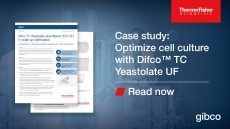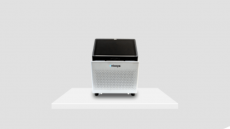Ori Biotech and ATMPS combine blockchain and CGT technology to streamline production of advanced therapies

The non-exclusive partnership will result in the integration of Ori’s proprietary CGT manufacturing platform’s data architecture with ATMPS’ Hataali, a secure data sharing platform, specially designed as a scalable system for advanced therapies.
The combination of the two platforms is aimed at providing improved product tracking, scheduling as well as live monitoring of the manufacturing status across the entire CGT supply chain from vein to vein; the integration will allow the secure sharing of relevant process data with therapy developers, contract development and manufacturing organizations (CDMOs) and even clinicians or patients in real-time, said the partners.
We heard from Jason Foster, CEO, Ori Biotech and Raja Sharif, CEO, ATMPS, about the implications of the partnership for the sector.
BioPharma-Reporter: First off, can you tell us more about how Hataali works?
Raja Sharif: Hataali is a vein to vein, blockchain based, cell orchestration platform, providing full chain of custody, identity, and condition information. It allows multiple stakeholders - hospitals, manufacturers, couriers - to communicate and coordinate their activities in real time, thereby increasing efficiency, ensuring patient safety and regulatory compliance.
Hospitals can order and pay for multiple ATMPs through a single portal, while manufacturers can serve and schedule treatments for multiple sites worldwide with immutable data assurance.
BPR: How will Ori’s proprietary CGT manufacturing platform’s data architecture be integrated with ATMPS’ Hataali?
Jason Foster: The objective for the partnership is to minimize the burden on therapy developers by having pre-integrated the chain of custody/chain of identity data from Hataali and the data generated by the Ori Platform together so that it can flow seamlessly into batch records and quality documentation. Both platforms are cloud native so will connect through APIs in the cloud or can connect to local (on-prem) systems.
RS: [Yes, to expand further], the Ori/Hataali integration will be done using APIs. We are already discussing data formats and data dictionaries that will allow us much easier and faster integration with collaborators in the future. To a certain extent, Ori and Hataali may end up setting the data standards for this evolving and nascent sector. Different data points are relevant to different stakeholders. For example, hospital challenges revolve around patient safety, the chain of identity - ensuring the right treatment gets to the right patient - and scheduling - ensuring the right patient, with the appropriate doctor/clinicians, with the right treatment, in an available treatment room are all there at the same time.
Any delays or acceleration in the manufacturing process will help make scheduling highly accurate.
Manufacturers are most concerned with efficiently commencing, producing, and delivering treatments with regulatory compliant records. The Hataali/Ori integration can ensure that we can provide immutable and incorruptible data records into the manufacturing process for manufacturers. Ultimately, the Ori/Hataali integration should allow digital regulatory compliance processes, making it far easier to establish and monitor facilities.
BPR: What are the benefits of increased visibility into the treatment process, as the partners claim?
JF: Right now, timeline visibility usually stops at the front door of the manufacturing facility and that two to three-week part of the manufacturing process becomes a black box. Through data integration, greater visibility into the process should allow for more frequent or even real-time progress updates/estimated time of arrival for therapy developers as well as, perhaps, clinical centers and patients. This should help with scheduling and logistics to help shorten overall vein-to-vein times.
BPR: How will the integrated platforms allow Ori to support partners across the CGT industry in terms of bringing therapies safely, cost effectively and as quickly as possible to large numbers of patients?
JF: In the short term, these types of integrated data platforms will help feed advanced predictive models and machine learning algorithms which will help speed up process development, improve the quality of the therapeutic products, reduce CMC risks and cut time to market for these therapies to reach patients at scale. In the medium term, these data will allow in process control mechanisms to further improve quality, increase throughput, and reduce costs.
BPR: On another note, what kind of progress has Ori made since the company closed a US$30m Series A round of funding in October last year?
JF: Ori has broadened its team - from 6 to 18 people. We have also expanded our collaborations with therapy developers, CDMOs and academic medical centers and we have begun to generate initial revenues for the business.
















